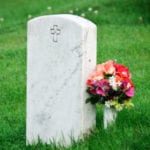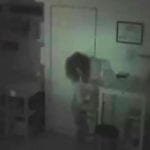 Our World
Our World  Our World
Our World  Movies and TV
Movies and TV The 10 Coolest Stars to Set Sail on The Love Boat
 History
History 10 Things You Didn’t Know About the American National Anthem
 Technology
Technology Top 10 Everyday Tech Buzzwords That Hide a Darker Past
 Humans
Humans 10 Everyday Human Behaviors That Are Actually Survival Instincts
 Animals
Animals 10 Animals That Humiliated and Harmed Historical Leaders
 History
History 10 Most Influential Protests in Modern History
 Creepy
Creepy 10 More Representations of Death from Myth, Legend, and Folktale
 Technology
Technology 10 Scientific Breakthroughs of 2025 That’ll Change Everything
 Our World
Our World 10 Ways Icelandic Culture Makes Other Countries Look Boring
 Our World
Our World 10 Ways Your Christmas Tree Is More Lit Than You Think
 Movies and TV
Movies and TV The 10 Coolest Stars to Set Sail on The Love Boat
 History
History 10 Things You Didn’t Know About the American National Anthem
Who's Behind Listverse?

Jamie Frater
Head Editor
Jamie founded Listverse due to an insatiable desire to share fascinating, obscure, and bizarre facts. He has been a guest speaker on numerous national radio and television stations and is a five time published author.
More About Us Technology
Technology Top 10 Everyday Tech Buzzwords That Hide a Darker Past
 Humans
Humans 10 Everyday Human Behaviors That Are Actually Survival Instincts
 Animals
Animals 10 Animals That Humiliated and Harmed Historical Leaders
 History
History 10 Most Influential Protests in Modern History
 Creepy
Creepy 10 More Representations of Death from Myth, Legend, and Folktale
 Technology
Technology 10 Scientific Breakthroughs of 2025 That’ll Change Everything
 Our World
Our World 10 Ways Icelandic Culture Makes Other Countries Look Boring
10 People Shot To Death On Video
In 2007, the Small Arms Survey determined that there are currently more guns in the United States per capita than any other nation in the world, with approximately 90 guns per 100 residents.
It is truly horrifying to watch someone being killed with a gun. Since the creation of video, thousands of people have been murdered on camera. In some cases, the footage has been featured on television documentaries and news broadcasts. The videos are always shocking and give people a true sense of how dangerous guns are.
10 Darrell Lunsford
On January 23, 1991, a constable named Darrell Lunsford was shot and killed in Nacogdoches County, Texas. The event occurred after Lunsford pulled over three men that were attempting to smuggle 31 lbs of marijuana from Texas to Chicago. After the car was pulled over, the officer asked the driver, Reynaldo Villarreal, to show him his license. Villarreal failed, so Lunsford instructed him to get out of the car and open the trunk. Villarreal opened the trunk and Lunsford noticed a strong smell of marijuana coming from the car.
At this point, the suspect’s brother, Baldemar Villarreal, exited the vehicle and joined the conversation. Lunsford originally told Baldemar to stay in the car, but he didn’t listen. Despite the danger, Lunsford, who was a large man, didn’t appear to be scared by the situation. He is repeatedly seen turning his back to the suspects. After a brief conversation, Baldemar Villarreal can be seen attacking Officer Lunsford by grabbing his legs. At the same time, Reynaldo and a third man in the car, Jesus Zambrano, joined in the attack. Lunsford was overwhelmed by the men and repeatedly stabbed. Baldemar grabbed the officer’s gun and fired one shot into his neck, which killed Lunsford instantly.
Just minutes before the murder, a fellow officer named Don Welch had passed by the scene, but didn’t notice anything out of the ordinary. He later witnessed the suspects fleeing the murder at a high speed and returned to find Lunsford’s body in a ditch. Welch immediately watched the dashboard cam video, which helped police identify the three suspects and arrest them. In the aftermath of the crimes, Baldemar Villarreal was given a life sentence, while the other two men received 30 and 40 years. The video of the killing has since been used to train officers who might face a similar situation.
9 Maritza Martin
On January 18, 1993, a woman named Maritza Martin was shot to death by her ex-husband in North Lauderdale, Florida. The incident was captured on video by the Spanish-language Network Telemundo and previewed by millions of people around the world. On the day in question, a reporter named Ingrid Cruz was interviewing a man named Emilio Nuñez about the suicide of his 15-year-old daughter for the TV show Ocurrió Así (“This Is How It Happened”). Nuñez blamed the event on his ex-wife Maritza Martin and her current husband, who he said drove the young girl to suicide. The interview was conducted at the cemetery where the girl was buried.
During the interview with Emilio Nuñez, Maritza Martin unexpectedly showed up at the cemetery to visit the grave of her daughter. In response, Ingrid Cruz approached her vehicle and attempted to interview Martin about the case. At the same time, Nuñez went over to his car and retrieved a 9-mm semiautomatic pistol. He then walked up to Martin and shot her to death in front of the camera. Maritza Matin was shot a total of 10 times (12 bullets fired). After the initial shots were fired, the news team fled the scene and dropped the camera. Cruz can be heard saying “Oh my God, he killed her, I don’t believe it. He killed her.” Emilio Nuñez responded with the quote “I should have done it a long time ago.” He then drove off in his car and was later arrested by the police.
The death of Maritza Martin has been featured on a large number of television broadcasts, including the films Bowling for Columbine and Executions. It is a violent clip that shows Martin being shot multiple times. In the aftermath of the murder, Emilio Nuñez blamed Telemundo for the crime. In 2000, he was convicted of first-degree murder and sentenced to 25 years to life in prison. Maritza Martin is buried next to her daughter in the same North Lauderdale cemetery she was murdered in.
8 Jeff Doucet
In 1984, a 25-year-old man named Jeff Doucet was working as a karate teacher in Baton Rouge, Louisiana, when he was suspected of molesting an 11-year-old student named Jody Plauche. In February 1984, Doucet kidnapped the young boy and took him to California. A massive search was carried out and Jody was eventually located at a hotel on March 1, 1984. A rape kit proved that the boy was sexually assaulted.
The news reached the 38-year-old father of Jody, Gary Plauche, who had previously stated that he would kill anyone who harmed his son. On March 16, 1984, Doucet was flown to the Baton Rouge Metropolitan Airport in order to stand trial. Gary Plauche was aware of his arrival and was given the exact location by a TV news station. At the airport, Plauche pretended to use a pay phone and waited for Doucet to walk by. He then pulled out a .38-caliber snub-nosed revolver and shot him once in the head with a hollow-point bullet. Jeff Doucet would later die at the hospital. Police immediately grabbed Plauche and said “Gary, why? Why, Gary?” He responded “if it was your child, you would have done the same thing.”
At the trial of Gary Plauche, he was charged with manslaughter and given a sentence of five years probation with 300 hours of community service, and didn’t serve any jail time. The video of the shooting has since been featured on many television documentaries, including Bowling for Columbine. The victim in the case, Jody Plauche, has become a public speaker and travels the United States in order to teach people about the dangers of sexual violence. Jody is quoted as an adult: “I didn’t want him dead. I just wanted him to stop.”
7 Latasha Harlins
On March 16, 1991, a 15-year-old girl named Latasha Harlins was shot and killed at Empire Liquor in South Central, Los Angeles. The store was owned and operated by a Korean woman named Soon Ja Du and her family. After entering the store, Latasha got a bottle of orange juice from the shelf and placed it in her backpack. She then took two dollars out of her pocket and walked up to the counter in order to pay for the drink.
Despite her money being present, Soon Ja Du was convinced that Harlins was trying to steal the beverage. She lunged at Latasha and grabbed her backpack. In response, Latasha punched Soon Ja Du three times and knocked her down to the ground. Du got up and threw a stool at Harlins, who picked up the orange juice and threw it on the counter. Harlins then turned her back to Du and attempted to leave the store when Soon Ja Du pulled out a gun and shot her in the back of the head, killing Latasha Harlins instantly.
The entire event was captured on the store’s security camera and the tape was used in the trial of Soon Ja Du. Her defense was an accidental shooting by way of self-defense. When all was said and done, Soon Ja Du was found guilty of voluntary manslaughter, but the judge in the case ordered a sentence of only five years probation, 400 hours of community service, and a $500 fine.
The decision caused outrage in Los Angeles and a large number of Korean-owned businesses were attacked. The death of Latasha came only 13 days after the videotaped beating of Rodney King and the case has been identified as one of the causes of the 1992 Los Angeles riots. In the riots, Empire Liquor was burned to the ground. The following year, recording artist Tupac Shakur released a song called “Keep Ya Head Up” that was dedicated to the memory of Latasha Harlins. Tupac referenced Latasha in a large number of his songs.
6 Deandre Brunston
On August 24, 2003, a 24-year-old man named Deandre Brunston was shot and killed by police in Compton, California. On the day in question, Brunston was being sought by police in connection with a domestic abuse call. He was tracked to a house and police attempted to make an arrest, but the suspect started to act erratically and told officers he had a gun. Brunston said he would shoot any police dog sent his way. He also told officers that he was wanted for murder, which wasn’t true.
After a tense standoff, the decision was made to release a police dog on Brunston. After the dog was set free, Brunston can be seen tossing a flip-flop sandal before being shot to death by the police. In five seconds, officers fired 81 shots and Brunston was hit 22 times. The dog was also shot and collapsed to the ground before reaching the suspect. Brunston and the dog later died from their injuries.
In the aftermath of the shooting, no gun was found on Brunston, which caused many to claim he was unlawfully killed. The event was captured on video by multiple witnesses and the clip has since been featured by news outlets. Using the footage, the family of Deandre sued the LA Sheriff’s Department for wrongful death and received a settlement of $340,000. The trial focused on the negligent training and supervision of the officers and didn’t put blame on a specific deputy. Since the killing, Deandre Brunston has become a symbol against police brutality.
5 Kyle Dinkheller
On January 12, 1998, a police officer from Dudley, Georgia, named Kyle Dinkheller was shot and killed by Andrew Brannan after a routine traffic stop. During the event, Brannan was pulled over for speeding at 100 mph. He got out of the car and started to approach the officer. Dinkheller told Brannan to put his hands up, but the suspect refused and began to act erratically. Brannan rushed toward Dinkheller in an aggressive manner and the 22-year-old cop pulled his gun out and told the man to get back. At this point, Dinkheller can be heard saying “I’m in fear for my life.”
After a heated exchange, Brannan returned to his vehicle and pulled out a semi-automatic M1 carbine rifle from under the seat. For 40 seconds, Kyle Dinkheller can be heard telling Andrew Brannan to drop the weapon, but the suspect doesn’t obey. Instead, he pointed the rifle at Dinkheller and the officer was forced to fire a shot in an attempt to subdue the attack. The bullet missed the suspect and both men started to shoot in a barrage of gunfire. In the video, Brannan can be seen rushing toward Dinkheller while firing his rifle.
Dinkheller was able to survive the first attack, but was shot multiple times. After the suspect reloaded his weapon, the officer was shot to death. The fatal bullet was fired directly after Brannan can be seen reaching toward his stomach in response to being shot by Dinkheller. In all, Officer Dinkheller was hit with about 10 of the 30 bullets fired at him. The day after the shooting, Andrew Brannan was arrested without incident and eventually sentenced to death. After being captured by the police, Brannan said he killed Dinkheller “because he let me.” As of 2013, Andrew Brannan is yet to be executed for the murder.
4 Greensboro Massacre
During the civil rights movement of the 1960s and 1970s, the city of Greensboro, North Carolina, saw numerous protests from people who were fed up with the unfair treatment of black Americans in the workplace. People were also upset with housing laws, healthcare, and the government representation of African Americans.
In the summer of 1979, a collection of protesters from the Communist Workers’ Party (CWP) began to disrupt events held by the Ku Klux Klan, which caused tension between the two groups. The leader of the CWP was a man named Paul Bermanzohn and he was quoted saying that “the KKK is one of the most treacherous scum elements produced by the dying system of capitalism.” Bermanzohn challenged the clan to attend a rally that was going to be held in Greensboro on November 3, 1979.
The protest was named “death to the clan” and was meant to bring attention to the crimes of the organization. In the days leading up to the rally, members of the KKK were tipped off to the location of the event and decided to attend the demonstration.
At the protest, news cameras were present, but the police were not, which was abnormal for a rally by the CWP. It is unclear who fired the first shot, but after the KKK arrived at the rally, a fight broke out. The situation quickly escalated and members of the KKK retrieved a large stash of weapons from the trunk of a Ford Fairlane and attacked the protesters.
For 88 seconds, shots can be heard and five protests were killed, including Sandi Smith, Dr. James Waller, Bill Sampson, Cesar Cauce, and Dr. Michael Nathan. The event was captured on video by multiple news agencies and the tapes were viewed around the world. After the police arrived at the scene, a large collection of people on both sides were arrested. Eventually, members of the KKK were brought to trial for the killings and were found innocent by way of self-defense. The video remains one of the most graphic taken during a public shooting.
3 Dimebag Darrell
On December 8, 2004, guitarist Dimebag Darrell was shot and killed by Nathan M. Gale while performing with his band Damageplan at the Alrosa Villa in Columbus, Ohio. The group was playing in front of a crowd of over 200 people when Gale approached the stage, pulled out a 9-mm Beretta 92FS, and shot Dimebag three times in the head, killing him.
Dimebag Darrell was an influential musician and founding member of the band Pantera. He is widely considered to be one of the greatest guitarists of all time and was an important force behind the expansion of groove metal.
The shooting was captured on camera and shows Gale killing the guitarist. As he was shooting Darrell, bodyguard Jeff “Mayhem” Thompson and employee Erin Halk rushed the stage and grabbed Gale. However, the suspect was able to shoot and kill both men. He then continued to fire and killed Nathan Bray who was trying to perform CPR on Thompson. Drum technician John “Kat” Brooks attempted to subdue Gale, but was shot three times and taken hostage by the killer.
After the police arrived, Officer James Niggemeyer entered the building through the back door. He snuck up on Gale and shot him once in the head with a 12-gauge Remington 870 shotgun, killing the suspect instantly. The shooting spree was captured on camera and broadcast around the world. In the wake of the tragedy, it was revealed that Nathan Gale was schizophrenic and had stopped taking his medication. The life of Dimebag Darrell was celebrated at the Arlington Convention Center and the event was attended by thousands of heartbroken fans.
2 Neda Agha-Soltan
On June 20, 2009, a woman named Neda Agha-Soltan was shot and killed in Iran while attending a protest against the election of President Mahmoud Ahmadinejad. On the day in question, Neda was traveling with her music teacher in Tehran when she was shot by a Basij militia member that was positioned on a rooftop. The killer used a high-powered rifle, but it is unclear if he was a sniper. Minutes after Neda was shot, members of the crowd pulled a man named Abbas Kargar Javid from a motorcycle and blamed him for her death. Javid can be heard saying “I didn’t want to kill her.”
During the attack, Neda Agha-Soltan was shot once in the chest and fell to the ground. People rushed to her side and tried to stop the bleeding, but shortly after being shot, a large amount of blood started to pour out of her nose and mouth. Neda lost focus and it was clear that she had suffered a fatal injury. Her final words were “I’m burning, I’m burning!”
The murder of Neda Agha-Soltan was captured on video by three separate people and broadcast around the world. Neda quickly became a symbol for the 2009 anti-government movement in Iran. The regime of Mahmoud Ahmadinejad responded by saying that Neda Agha-Soltan was shot for propaganda reasons and that the video was fabricated by the West. Neda’s family was harassed and her gravestone was desecrated. Public gatherings in support of Neda were forbidden and people were prevented from supporting her cause.
The name Neda means “voice” in modern Persian, so Neda Agha-Soltan has been referred to as the “voice of Iran.” After the video of her death was shown on CNN, it quickly went viral. To date, the footage has been called the most-viewed death in history. It contains extreme graphic images of violence. While Neda was lying on the street, it is comforting to know that people reassured the young woman to “not be afraid” as she made her way into the afterlife.
1 Muhammad al-Durrah
On September 30, 2000, a 12-year-old boy named Muhammad al-Durrah was shot and killed in the Gaza Strip. The event occurred at the start of the Second Intifada, a prolonged conflict between Palestine and Israel. During the shooting, Muhammad and his father Jamal were trapped in the crossfire between Israeli and Palestinian soldiers. Jamal and Muhammad attempted to hunker down behind a concrete cylinder, but became targeted by a shooter. The event was captured on video for France 2 and shows bullets surrounding the pair until one kills Muhammad.
Initially, the Israel Defense Forces (IDF) accepted responsibility for the killing. However, they have since issued a retraction and blamed the murder on Palestine. The country has even gone so far as to claim the video was faked. The cameraman who took the video was quoted: “The IDF was aiming at the boy, and that is what surprised me, yes, because they were shooting at him, not only one time, but many times.”
Muhammad al-Durrah has been hailed as a martyr throughout the Arab and Muslim worlds. In the wake of his death, it was reported that he was killed by a gunshot to the abdomen and experienced multiple gunshot wounds. Jamal al-Durrah was injured in the attack, but survived. In 2013, a French-Jewish media analyst named Phillipe Karsenty was convicted of defamation when he claimed the video of Muhammad’s death was doctored by the media. The footage continues to spark debate around the world.








